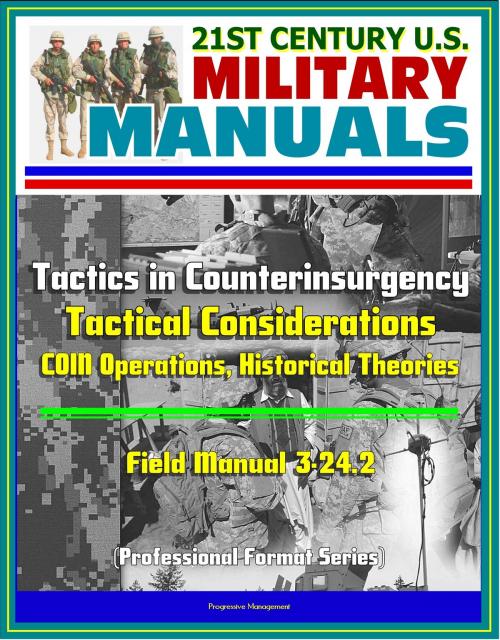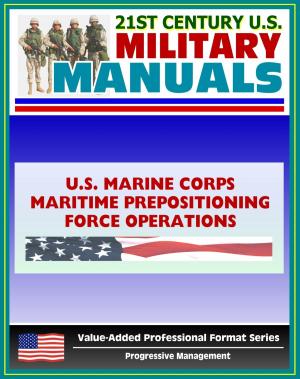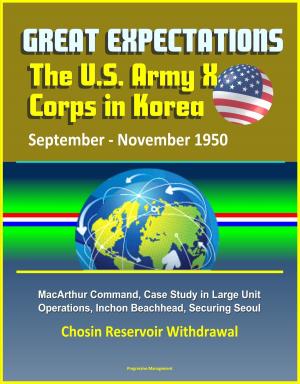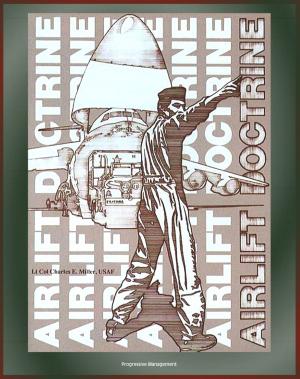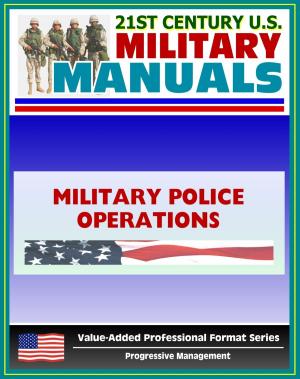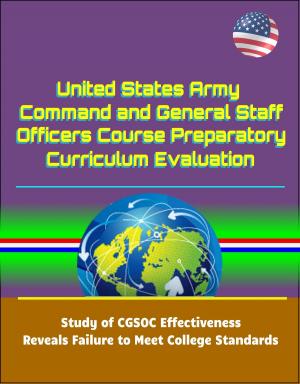21st Century U.S. Military Manuals: Tactics in Counterinsurgency - Field Manual 3-24.2 - Tactical Considerations, COIN Operations, Historical Theories (Professional Format Series)
Nonfiction, History, Military, Strategy, Social & Cultural Studies, Political Science| Author: | Progressive Management | ISBN: | 9781301860593 |
| Publisher: | Progressive Management | Publication: | November 27, 2012 |
| Imprint: | Smashwords Edition | Language: | English |
| Author: | Progressive Management |
| ISBN: | 9781301860593 |
| Publisher: | Progressive Management |
| Publication: | November 27, 2012 |
| Imprint: | Smashwords Edition |
| Language: | English |
Professionally converted for accurate flowing-text e-book format reproduction, this 2009 Army Field Manual establishes doctrine (fundamental principles) for tactical counterinsurgency (COIN) operations at the company, battalion, and brigade level. It is based on lessons learned from historic counterinsurgencies and current operations. This manual continues the efforts of FM 3-24, Counterinsurgency, in combining the historic approaches to COIN with the realities of today's operational environment (OE)—an environment modified by a population explosion, urbanization, globalization, technology, the spread of religious fundamentalism, resource demand, climate change and natural disasters, and proliferation of weapons of mass destruction. This manual is generic in its geographic focus and should be used with other doctrinal sources.
• Chapter 1, Operational Environment of Counterinsurgency, defines insurgent and counterinsurgent while using the operational variables and mission variables to describe the OE. Finally, it stresses developing a culture capability for Soldiers and leaders.
• Chapter 2, Foundations of Insurgency, categorizes insurgent groups by their components— elements, dynamics, and strategies and their manifestations—tactics, strengths, and vulnerabilities.
• Chapter 3, Foundations of Counterinsurgency, covers the seven lines of effort, tactical considerations, clear-hold-build operations, and counterinsurgency phases.
• Chapter 4, Planning in Counterinsurgency, arguably the most important chapter, covers planning for tactical units during counterinsurgency operations. It also covers planning horizons and targeting.
• Chapter 5, Offensive Operations in Counterinsurgency, addresses offensive techniques used by tactical units during counterinsurgency operations.
• Chapter 6, Defensive Operations in Counterinsurgency, addresses defensive techniques used by tactical units during counterinsurgency operations.
• Chapter 7, Stability Operations in Counterinsurgency, addresses stability techniques used by tactical units during counterinsurgency operations.
• Chapter 8, Working with Host Nation Security Forces, covers the seven steps (MORTEAM) units use to train, advise, and partner with Host Nation security forces.
As a bonus, this reproduction includes the complete 2012 Army Leadership manual (FM 6-22), which describes the Army's view of leadership, outlines the levels of leadership (direct, organizational, and strategic), and describes the attributes and core leader competencies across all levels. The principal audience for ADRP 6-22 is all leaders, military and civilian. Trainers and educators throughout the Army will also use this publication. Commanders, staffs, and subordinates ensure their decisions and actions comply with applicable United States, international, and, in some cases, host-nation laws and regulations. Commanders at all levels ensure their Soldiers operate in accordance with the law of war and the rules of engagement.
Professionally converted for accurate flowing-text e-book format reproduction, this 2009 Army Field Manual establishes doctrine (fundamental principles) for tactical counterinsurgency (COIN) operations at the company, battalion, and brigade level. It is based on lessons learned from historic counterinsurgencies and current operations. This manual continues the efforts of FM 3-24, Counterinsurgency, in combining the historic approaches to COIN with the realities of today's operational environment (OE)—an environment modified by a population explosion, urbanization, globalization, technology, the spread of religious fundamentalism, resource demand, climate change and natural disasters, and proliferation of weapons of mass destruction. This manual is generic in its geographic focus and should be used with other doctrinal sources.
• Chapter 1, Operational Environment of Counterinsurgency, defines insurgent and counterinsurgent while using the operational variables and mission variables to describe the OE. Finally, it stresses developing a culture capability for Soldiers and leaders.
• Chapter 2, Foundations of Insurgency, categorizes insurgent groups by their components— elements, dynamics, and strategies and their manifestations—tactics, strengths, and vulnerabilities.
• Chapter 3, Foundations of Counterinsurgency, covers the seven lines of effort, tactical considerations, clear-hold-build operations, and counterinsurgency phases.
• Chapter 4, Planning in Counterinsurgency, arguably the most important chapter, covers planning for tactical units during counterinsurgency operations. It also covers planning horizons and targeting.
• Chapter 5, Offensive Operations in Counterinsurgency, addresses offensive techniques used by tactical units during counterinsurgency operations.
• Chapter 6, Defensive Operations in Counterinsurgency, addresses defensive techniques used by tactical units during counterinsurgency operations.
• Chapter 7, Stability Operations in Counterinsurgency, addresses stability techniques used by tactical units during counterinsurgency operations.
• Chapter 8, Working with Host Nation Security Forces, covers the seven steps (MORTEAM) units use to train, advise, and partner with Host Nation security forces.
As a bonus, this reproduction includes the complete 2012 Army Leadership manual (FM 6-22), which describes the Army's view of leadership, outlines the levels of leadership (direct, organizational, and strategic), and describes the attributes and core leader competencies across all levels. The principal audience for ADRP 6-22 is all leaders, military and civilian. Trainers and educators throughout the Army will also use this publication. Commanders, staffs, and subordinates ensure their decisions and actions comply with applicable United States, international, and, in some cases, host-nation laws and regulations. Commanders at all levels ensure their Soldiers operate in accordance with the law of war and the rules of engagement.
